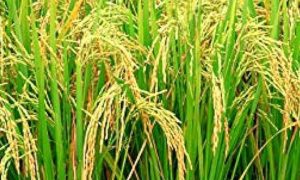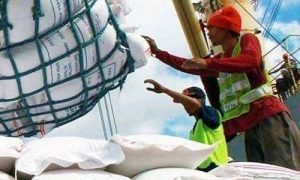KRBL eyes ₹100-200 crore bulk export opportunity as India lifts non-basmati rice export ban

KRBL anticipates a boost in non-basmati rice exports after India’s ban lift, with potential for ₹100-200 crore in incremental revenue. Though non-basmati currently comprises just 5% of exports, bulk trade opportunities with countries like West Africa, China, and the Philippines are expected. KRBL previously exported 100,000 tonnes of broken rice to China, generating ₹300-350 crore. While branded basmati dominates their exports, they are poised for growth in bulk trade.
KRBL, primarily known for its basmati rice exports, expects a potential boost in its non-basmati rice exports following the lifting of the ban by the Indian government.
Although non-basmati rice currently accounts for just 5% of KRBL’s exports, the company sees an opportunity for ₹100-200 crore in incremental revenue from bulk trade to countries like West Africa, China, the Philippines, and Indonesia.
Akshay Gupta, Head of Bulk Exports, said the opportunity depends on favourable pricing and margins.
KRBL aims to capitalise on lucrative deals similar to those seen two years ago when they exported around 100,000 tonnes of broken rice to China, valued at ₹300-350 crore, Gupta said.
Q: What proportion of your exports come in from non-basmati? And now that the ban has been lifted, the export duty has been reduced. What would it mean in terms of you being able to capitalize on this opportunity? How could the incremental volume span out from here?
A: For us, 95% of our exports are mainly for basmati rice. So it is only 5% of exports that we do of non-basmati in our own brands, and that is regional varieties such as Sona Masoori Ponni boiled, which is to the Indian diaspora living abroad. So that is what we do in non-basmati rice.
But given that the ban is lifted now, some opportunistic businesses keep coming in for bulk trade to countries like West Africa, China, the Philippines, and Indonesia. So we are looking for those businesses to come up. And if there a good, lucrative opportunities there, we will grab those opportunities.
Q: Could you quantify the size of the opportunity here? As you said, these are opportunities that may come by.
A: To give a perspective last time, about two years back before the ban was there, we did about 100,000 tonne of broken rice to China and that was a completely opportunistic business. It was valued at about ₹300-350 crore.
So, a business of about ₹100-300 crore can be done if pricing is good and we feel that we are getting good margins, then only we delve into those businesses.
Q: Preliminary, any kind of opportunities you see, could be a possibility at this point?
A: Immediately, we are branded regional rice sales, which we do to countries like Europe, the US and the Middle East, which is mainly to the Indian diaspora living abroad. So that will account for 5% of our overall exports, and then the bulk business could be about ₹100-200 crore, but given the opportunity, maybe after a couple of months, we could do that business as well.
Q: The other thing is that the minimum export price (MEP) on Basmati was removed in mid-September. What are your average realizations? We understand it is above the MEP in any case. And what kind of opportunity is it presenting to you all?
A: MEP does not have a direct impact on our regular export sales, because we are mainly in the branded segment, and our average price is above $1200. So it doesn’t affect us. But now that the MEP is removed again in that space, also we get an opportunity to do bulk basmati business, such as tenders to certain Middle Eastern countries where they do tenders for food security. So we can delve into those businesses as well again. So the lower segment is mainly a business where we see opportunity, if we see a good margin coming in, then only we do those businesses.
Q: Your first quarter exports were down 54% – close to around ₹250 crore, is what you did. This also was due to some distribution challenges in Saudi. Wanted to understand if those challenges are behind you, and what kind of export run rate are you likely to see over the next few quarters.
A: So the entire 54% was not because of Saudi. So there were some businesses done to Iran as well, which we might resume, given the MEP is lifted, so I think we can cover up some of those exports. And then the Saudi part, it’s still undergoing. It is still not resolved. It might take another three to four months for us to get back on track with that.
Q: This year how much exports are you targeting?
A: I cannot give you a number, but I think we will see a good increase compared to last year. I think we will cover some ground there.















